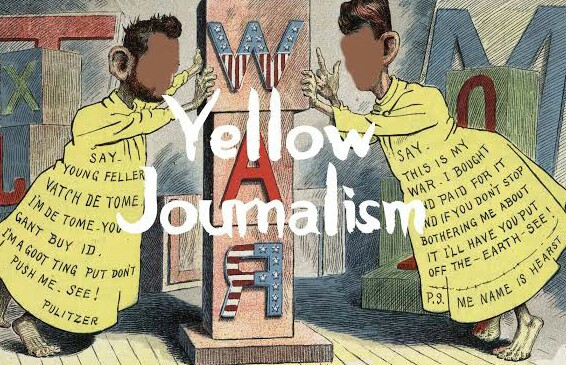The Dark Side of Journalism: Yellow Journalism
Yellow journalism refers to the presentation or presentation of unfounded thrilling news. In such journalism, the news is served with eye-catching and eye-catching headlines without proper research or investigation.
Frank Luther Mott Yellow highlights five characteristics of journalism:
1. Make a headline a terrifying headline of large size across a few columns of general events.
2. Excessive use of imagery and imaginary design.
3. Fake interviews, misleading headlines, fake scientific essays, and the use of misleading essays by so-called experts.
4. Publication of full color Sunday magazines, with which comics are usually attached.
5. Dramatic sympathy for the defeated heroes swimming against the current.
The word 'yellow journalism' is terrifying but it has an interesting history behind it. Just as gold has a base, so does journalism have a counterfeit. Beyond these, journalists have repeatedly proved that Mosi has more power than Aussie. Journalism is not just a profession, it has a wealth of passion, ideals and patriotism.
In journalism, the term Yellow Journalism or Yellow Journalism came into being in the late nineteenth century. Today's 'yellow journalism' is the result of an evil competition between two world famous journalists Joseph Pulitzer and William Hearst.
In 1883 the famous journalist Joseph Pulitzer bought a newspaper called New York World. The previous owner of the magazine was Jay Gold. William Hearst, on the other hand, bought The Journal in 1882 from Albert Pulitzer, the brother of Joseph Pulitzer. But Pulitzer did not take the issue of family members' magazine Hearst lightly.
Pulitzer's Cold War with Hearst begins. After buying Pulitzer's New York World, he started publishing sensational news, flashy news, etc. Richard Fento hired a cartoonist named Outcult on his paper. The cartoonist used to draw a cartoon on the front page of New York World every day called 'Yellow Kid' or 'Yellow Boy' and used it to say many things starting from social inconsistency, which was very biased.
At one point, Hearst Pulitzer's New York World cartoonist Richard Fento lured Outcult into his "journal" for a higher salary. Hearst did not stop there, showing greed for a hefty salary and dragging all the good journalists of New York World into his newspaper. Poor Pulitzer's angry fire. He necessarily hired another cartoonist named George Chi Lucas.
Yellow Kids or Yellow Boy cartoons began to appear in both the Journal and the New York World. The conflict between the two magazines started with the cutting of the newspaper. The controversy between the Journal and New York World became increasingly interesting to newspaper readers of the time.
Both magazines began publishing baseless, truthful, half-truthful personal scandalous news to increase their hits. As a result, both the magazines lost their value. It created a depraved mindset of readers who were always expecting flashy, unfounded, sensational, half-truthful news and were content to read it.
Thus, Joseph Pulitzer and William Hearst were both accused of yellow journalism and made history. Although it is said that yellow journalism came to an end after the beginning of the twentieth century, today there is a touch of yellow journalism behind fake news in various media.
- Shantanu Dutta

Comments
Post a Comment